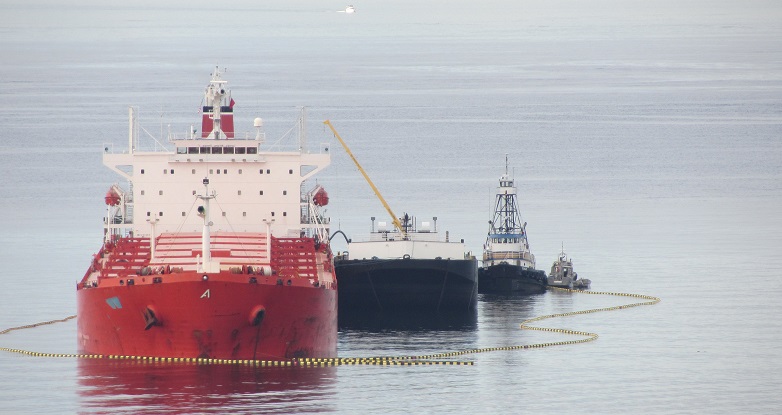Bunkering requirements for ships
Ships often load fuel — a process called bunkering — when at Washington's ports. Our bunkering rule has helped decrease the number of large oil spills in Washington.
Bunkering requirements
Our bunkering rule applies to all operations that provide fuel to vessels of 300 gross tons or more that are covered by oil spill contingency plans. The rule applies to all owners, operators, people in charge, and other personnel involved in the operations. Rules for safe bunkering include but are not limited to:
- A written pre-loading plan.
- Work-hour limitations for bunkering personnel.
- A training session for crew involved in bunkering.
- Safe access between the receiving vessel and the delivering vessel or facility.
- A face-to-face pre-transfer meeting between the persons-in-charge.
- A dedicated deck-rover to look for spills.
- Specific communication procedures.
- Compliance with federal rules for oil transfers.
More information
Bunkering recommendations
We provide guidance, checklists, and best practices information for complying with our rules for safe bunkering.
| Resource | Description |
|---|---|
| Bunkering video | Instructional video for bunkering crews. |
| Bunkering manual | Helps vessels comply with our bunkering rule. |
| Procedure checklist | Helps vessels comply with our bunkering rule. |
| Hand signal communications guide | Signals for crew use throughout the bunkering procedure. |
| Example bunker pre-loading plan | Form to assist crews in preparing to bunker. |
| Vessel oil spill penalties | Spill penalties outline for Washington, USCG-Port State, and Oregon State. |
Related links
Contact information
Sara Thompson
Vessel and Oil Transfer Inspection Supervisor
sara.thompson@ecy.wa.gov
360-280-5128


